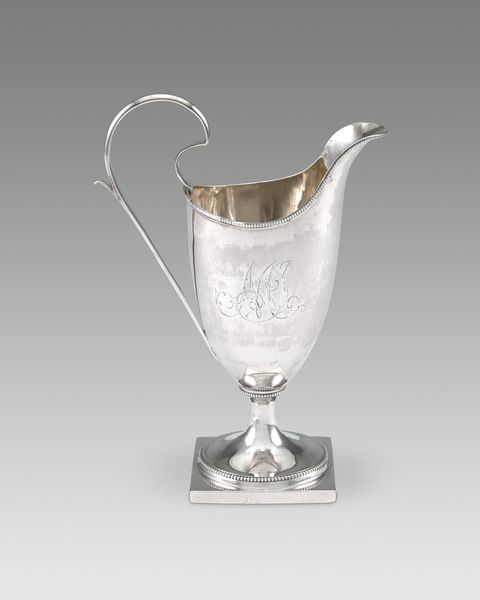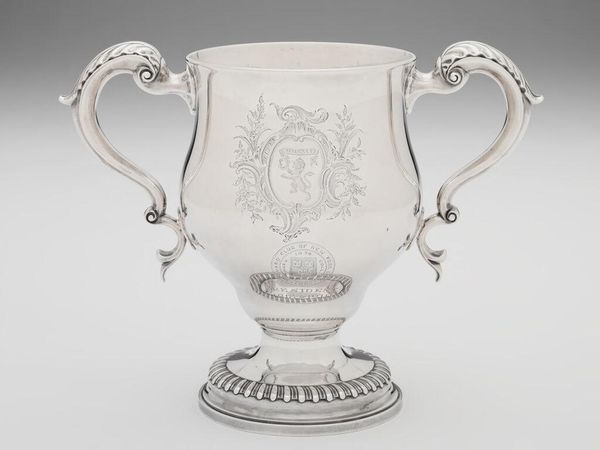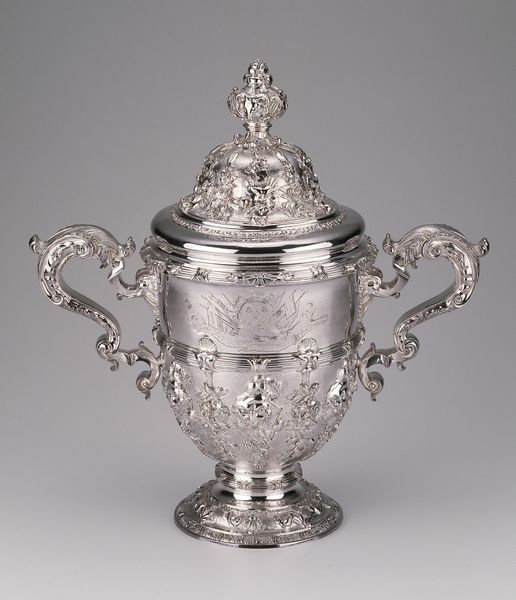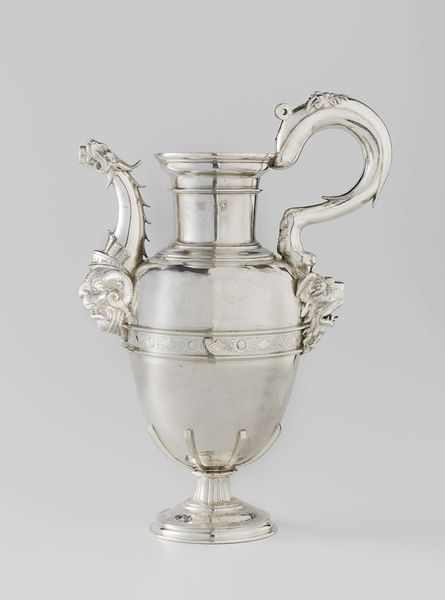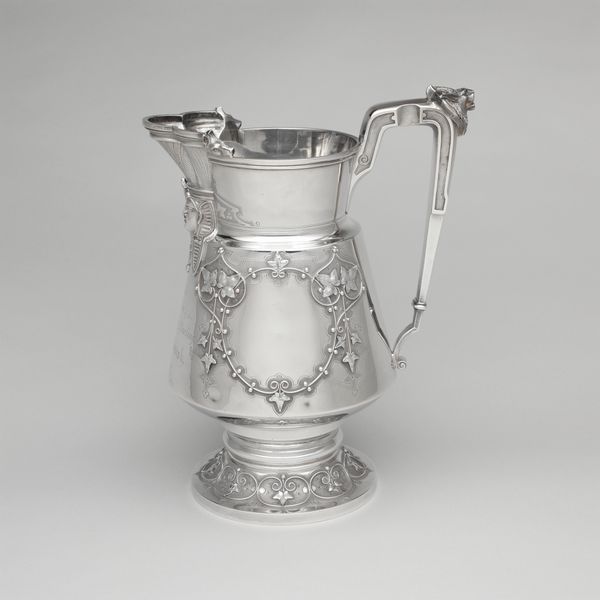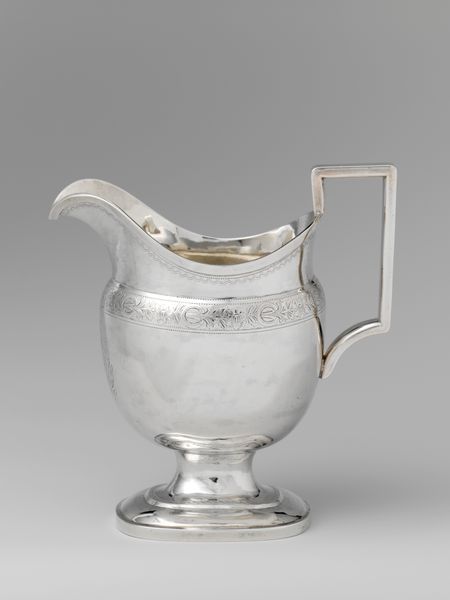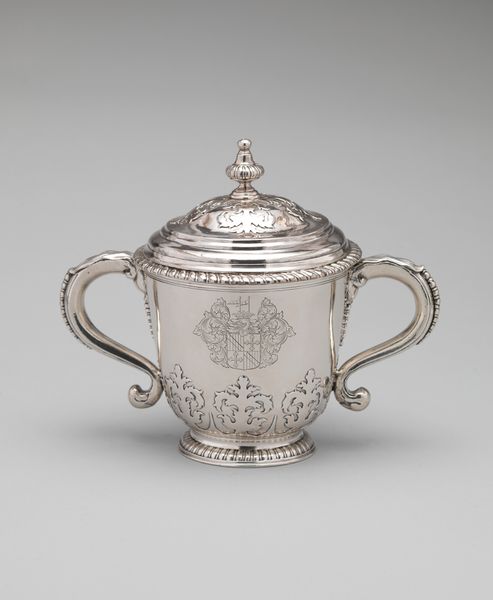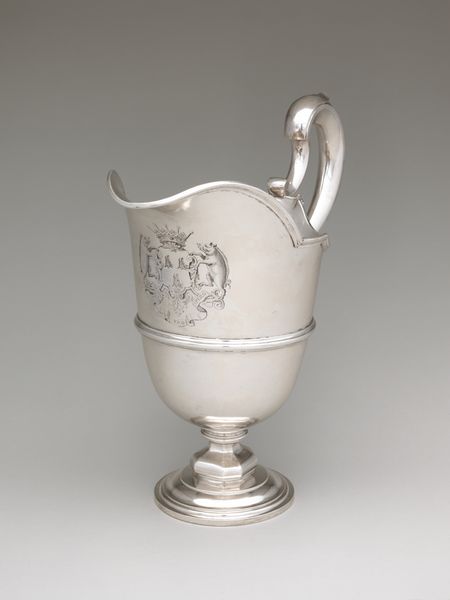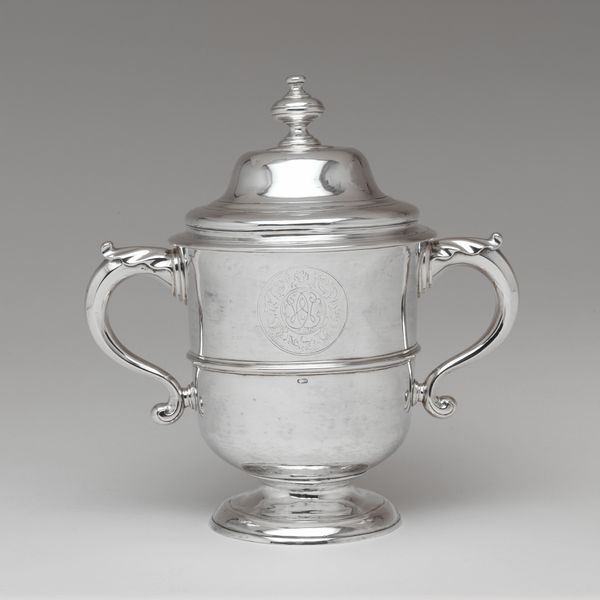
metal
#
baroque
#
metal
#
decorative-art
Dimensions: height 27.0 cm, width 25.0 cm, depth 16.0 cm, weight 1121 gr
Copyright: Rijks Museum: Open Domain
Curator: What a fantastical piece. At first glance, I see an object lifted straight from a fairy tale, reflecting a desire for display as much as utility. Editor: Indeed. This is a silver basin and ewer, made in 1649 by Andries Grill. Ewers like these were fashionable items. Their significance lay less in functionality and more in embodying power and refinement. Curator: I notice immediately the dragon-shaped handle; in Western iconography dragons often represent guardians, and they signify strength and authority. Given this piece was likely owned by the elite, would that reading be apt in this case, reinforcing wealth and status? Editor: I think that reading definitely holds weight here. Furthermore, note how the dragons on the handle support it, emphasizing service and reliability which were expected of elites, but, conversely, the ornamental dragons and swirling relief might express their detachment from those very concerns. Curator: The piece does emanate almost icy self-assurance and aristocratic distance. The metal work gleams but lacks warmth; its intricate embellishments impress but don't invite closer human engagement. It stands on its own as an emblem. How do you read this from your viewpoint? Editor: Considering how water basins were used to purify the hands, this ewer takes on further meanings: the visual display of cleansing as a sign of piety, yet the ornamental luxury suggests this action has become merely a ceremonial privilege devoid of true reverence. Its use becomes entirely secondary. Curator: Very insightful! The Baroque love for opulent detail meets ideas about hygiene, creating a complex social display. What seems a simple object contains layers of wealth, status, and self-presentation deeply embedded within 17th-century society. Editor: Yes, thinking about this basin and ewer, its imagery encourages us to look into both personal vanities, and those of its wider society.
Comments
rijksmuseum about 2 years ago
⋮
This basin and ewer were made for the Delft councillor Gerard Meerman. They are engraved with two escutcheons, one for Meerman and the other for his wife. However, only his shield is filled in. The celebrated Hague silversmith Grill executed the objects in a personal interpretation of the so-called Auricular style, placing emphasis on abstract linear forms.
Join the conversation
Join millions of artists and users on Artera today and experience the ultimate creative platform.
